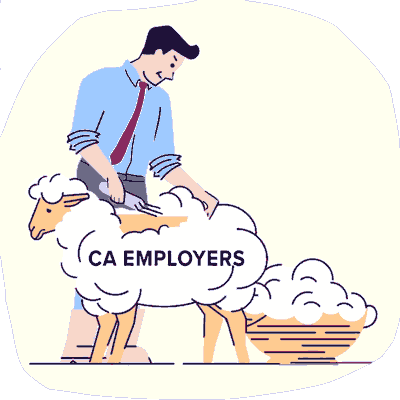CA Employers Beware: Problems With WCIRB Reports

In its 2025 State of the System report, the Workers’ Compensation Insurance Rating Bureau (WCIRB) presents its findings with an air of authority.
However, a close look at the data behind the report reveals serious limitations.
The WCIRB is not a neutral analyst but an insurer organization representing insurers’ interests. Employers (and California regulators and legislators) should approach the report’s conclusions skeptically, because WCIRB recommendations based on suspect data directly impact employers' costs for workers’ comp coverage.
For example, the WCIRB relies on unit statistical data developed to an “estimated ultimate claim level,” the accuracy of which depends on the assumptions the WCIRB bakes into its models. This “estimated” claims data means the WCIRB is modeling, adjusting, and projecting conclusions from insurer self-reported data before anyone outside the WCIRB sees it.
Without the raw data, stakeholders cannot independently verify whether these “ultimate” figures reflect reality or simply WCIRB assumptions that support increasing California employers’ premiums. Without complete transparency, stakeholders cannot know whether assertions and figures in the 2025 report reflect reality or WCIRB members’ agendas.
Below, we explore specific ways the WCIRB report raises questions, particularly for employers facing a rate hike at the WCIRB’s request.
Cumulative Trauma and Occupational Disease: A Troubling Blend
“Chart 10” (below) tracking cumulative trauma in indemnity claims comes directly from the 2025 State of the System report. But as the source notes (below) reveal, the WCIRB’s cumulative trauma category includes occupational disease claims, presenting both in a single data category.
This conflation of cumulative trauma and occupational disease obscures meaningful distinctions between cumulative trauma (CT) and occupational diseases.
CT claims differ substantially from occupational disease claims in terms of frequency, cost structures, and litigation patterns. Aggregating data for both makes distinguishing between repetitive‑motion injuries and long‑latency occupational diseases harder. Employers cannot know whether CT or occupational diseases drive rising trends without disaggregated data.
By merging these two categories and muddying the differences in cost patterns and litigation dynamics, the WCIRB makes it harder to craft appropriate policy responses for each.
Indemnity-Only Data: A Skewed Lens
Another glaring limitation of the report is the WCIRB’s decision to base some analyses (including on Chart 10) solely on indemnity claims, excluding medical-only claims.
Medical-only claims comprise the bulk of workers’ compensation claims and are critical for understanding systemwide costs, claim frequency, and care patterns. By focusing only on indemnity, the WCIRB presents a skewed view of the system and ignores the larger base of claims that employers and providers deal with daily.
Employers are entitled to a thorough analysis of what it costs to actually treat and heal their injured employees, irrespective of indemnity costs. The WCIRB’s selective approach paints an incomplete and potentially misleading picture of the system.
Preliminary and Difficult-to-Verify Data: An Unstable Foundation
In several cases, the WCIRB report discloses that its figures for accident years 2023 and 2024 are preliminary and based only on policies that incepted the prior year.
This limitation makes the data incomplete and subject to potentially significant revisions. Early-year numbers commonly shift as claims mature and late-reported cases are factored in. Today’s conclusions may be invalid tomorrow.
Worse, the dataset is difficult to verify: stakeholders outside the WCIRB cannot readily review the methodology, inputs, or adjustments. Employers and regulators are asked to accept the WCIRB’s word on faith, which is a deeply concerning proposition when shaping policy, conducting oversight, and increasing employers’ rates.
The State’s Failure: WCIS Data Left on the Shelf
As we discussed in our previous article on the State of the System’s shortcomings, the WCIRB has almost complete control over the narratives around workers’ comp costs because the California Division of Workers’ Compensation (CA DWC) has inexplicably failed to collect workers’ comp data, in violation of state law.
The law requires the CA DWC to collect comprehensive, claim-level data through the Workers’ Compensation Information System (WCIS). This statutory mandate exists precisely to provide the state (and by extension, employers) with transparent, verifiable insight into claim frequency, costs, and outcomes.
Yet more than a decade after the state mandated the WCIS, the CA DWC has failed to implement it in a way that delivers the promised public reporting, declaring instead that reporting to WCIS is “voluntary” for claims administrators. As a result, employers must rely on WCIRB data instead of a state-run, statutory system built to ensure accuracy and accountability.
The CA DWC also failed to establish mandatory reporting on Utilization Review of the treatment doctors request for injured workers. By not fulfilling its legal obligation, the CA DWC ceded control of the narrative to the WCIRB, allowing industry-controlled, opaque data to drive employer premiums higher.
Blind Faith in WCIRB: A Disservice to CA Employers
While state legislators, regulators, and analysts treat the State of the System as a neutral snapshot of the California workers’ comp environment, it is anything but.
It is an interpretation of selected, preliminary, and unverifiable data shaped largely by insurer choices that limit what observers can see. The CA DWC’s ongoing failure to collect data on the public’s behalf as required by law compounds the problem, leaving employers with little ability to challenge insurer-driven narratives that may inflate their costs.
Until California enforces state mandates and delivers transparent, verifiable reporting and analysis, employers and regulators should treat the WCIRB’s conclusions with caution.
daisyBill has data you can trust, with powerful analytics to manage your workers’ comp revenue. Click below to learn more:
THE DAISY DIFFERENCE
DaisyBill provides content as an insightful service to its readers and clients. It does not offer legal advice and cannot guarantee the accuracy or suitability of its content for a particular purpose.





